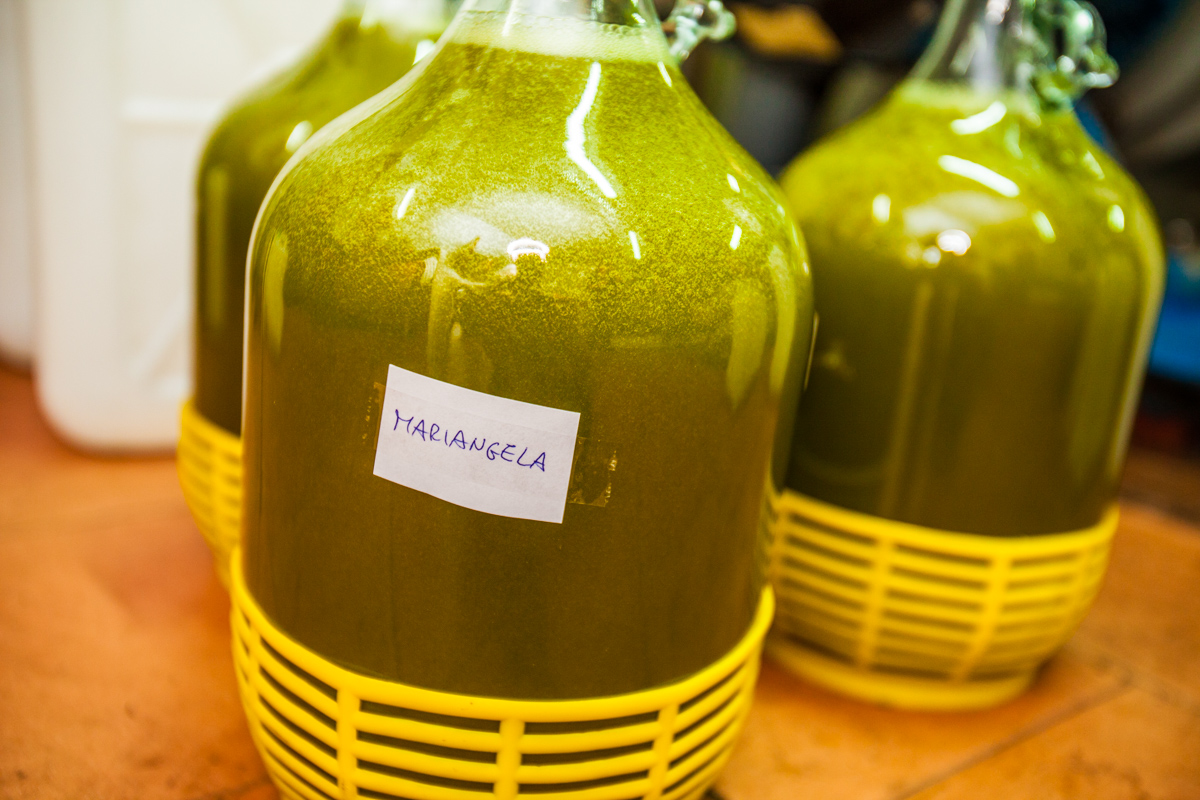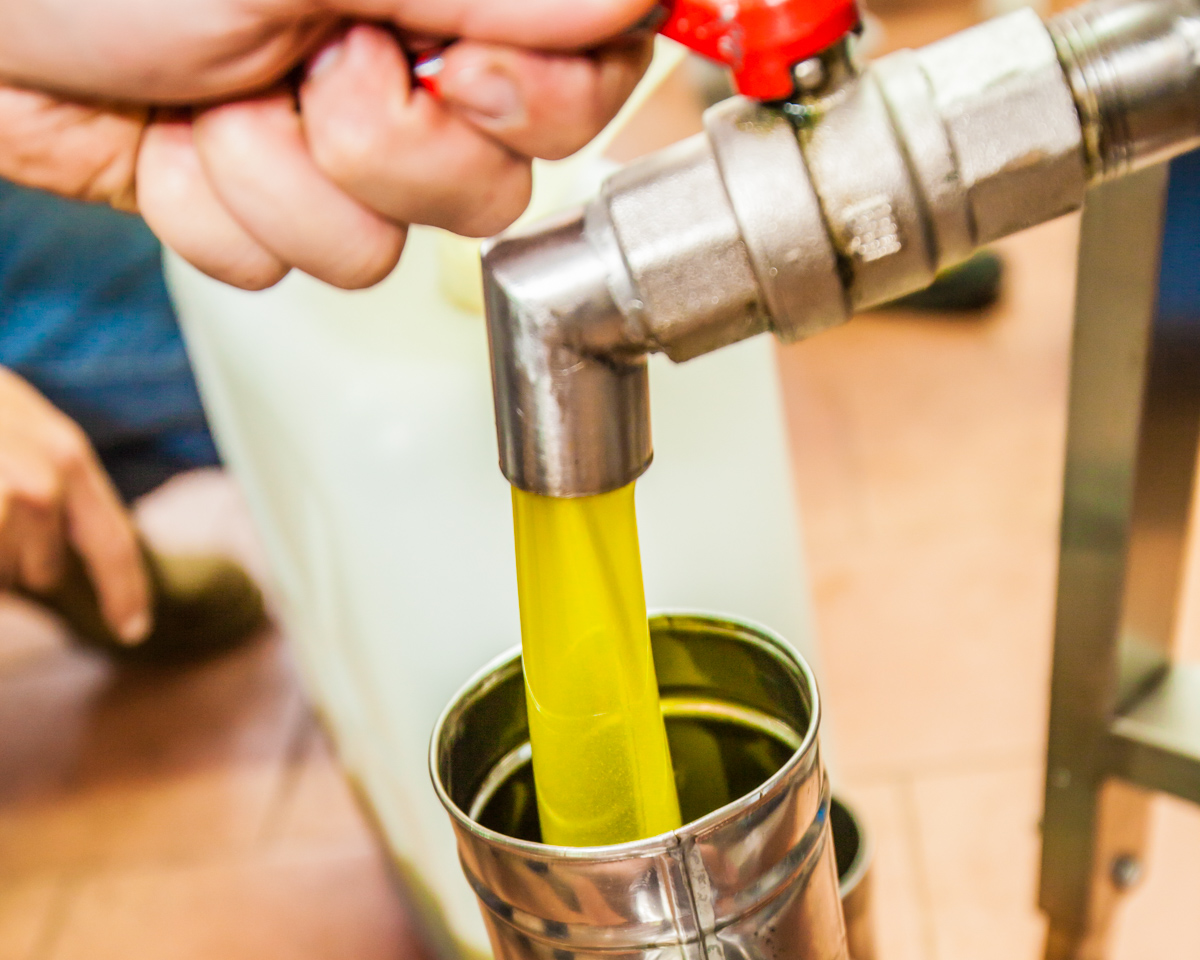Tree to Table Olive Oil
If there is one traditional food process in Sicily that I’ve been dying to see in action, it’s pressing olive oil. The Etna region is known for it’s high quality DOP olive oil and everywhere you turn you’ll find the silvery-green leaves of olive trees shimmering along the hillsides, vineyards and terraces. When our friend Rocco called and asked if we wanted to come with him to press his olives, I was excited to see an authentic process – from tree to table.
There is something about Rocco that makes you feel he’s one of the happiest men on earth. He always greets you with a broad smile, and you can count on him to make a good joke within five minutes of saying hello. He also has a knack for impeccable color coordination. He’s always (literally every single day) dressed in a different bright solid shirt and perfectly matching knit cap. When we met to press his olives, Rocco was head to hips in a bold red.

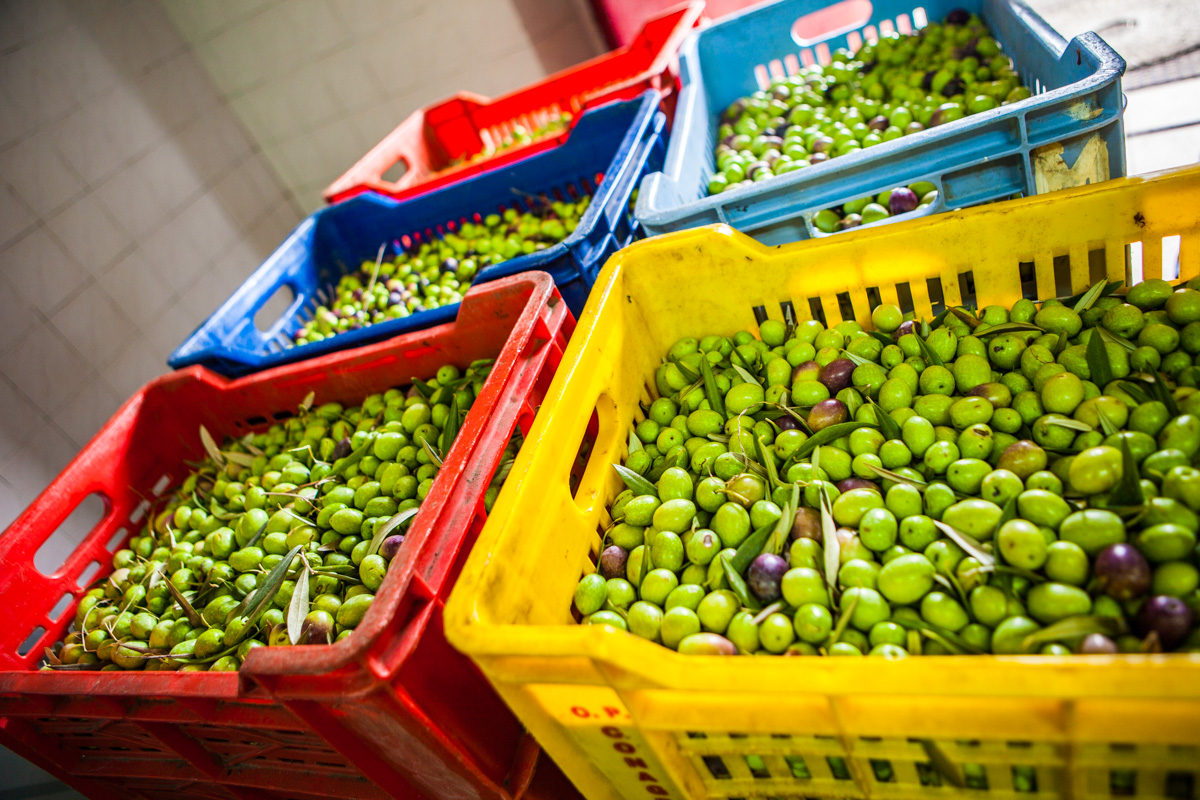
We arrived at his home in Linguaglossa to find his little Fiat Panda and a small trailer packed to the brim with crates of olives he had picked from his orchards the day before. Rocco’s grandfather grew vineyards on the family property, but later his father planted olive trees and began making oil. Over sixty years ago Rocco’s father would collect saplings from nearby wild olive trees and graft them onto the existing varieties growing on their property. Rocco explained that the wild olives were very strong and disease resistant. Rocco’s family groves now contain two varieties; Nocellara Etna and San Benedetto (or Biancolilla). The Nocellara produce high yields of oil – 4kg of olives make 1 liter oil. The San Benedetto produce less oil (10kg olives to 1 liter oil) but are more aromatic. The family’s 135 olive trees were planted in three different areas. This way if there is a hail storm (not an uncommon occurrence on Etna) the whole crop won’t be lost. On an average year Rocco produces 470-500 liters of olive oil to share with the family.

We drove slowly behind Rocco and his olives along the narrow, windy roads to an oleificio in Santa Venera. Operated by the Tosto family, the staff of this oleificio take shifts running the equipment 24 hours a day from October to January as the community flows in with the season’s harvest of olives. We arrived at 8:30am and there were several people already weighing and pouring their olives into the first stage of the the system. The olives vibrate through a metal grid with air blown over to help remove any stems and leaves. They travel up a grill – like a mini olive escalator – which dumps them into vats of water to agitate and clean them. Next the olives are fed in a steady stream into the molazza. Two enormous granite wheels spin and crush the olives into a paste which is then fed out a tube and layered by the staff onto nylon pads alternating with stainless steel discs.
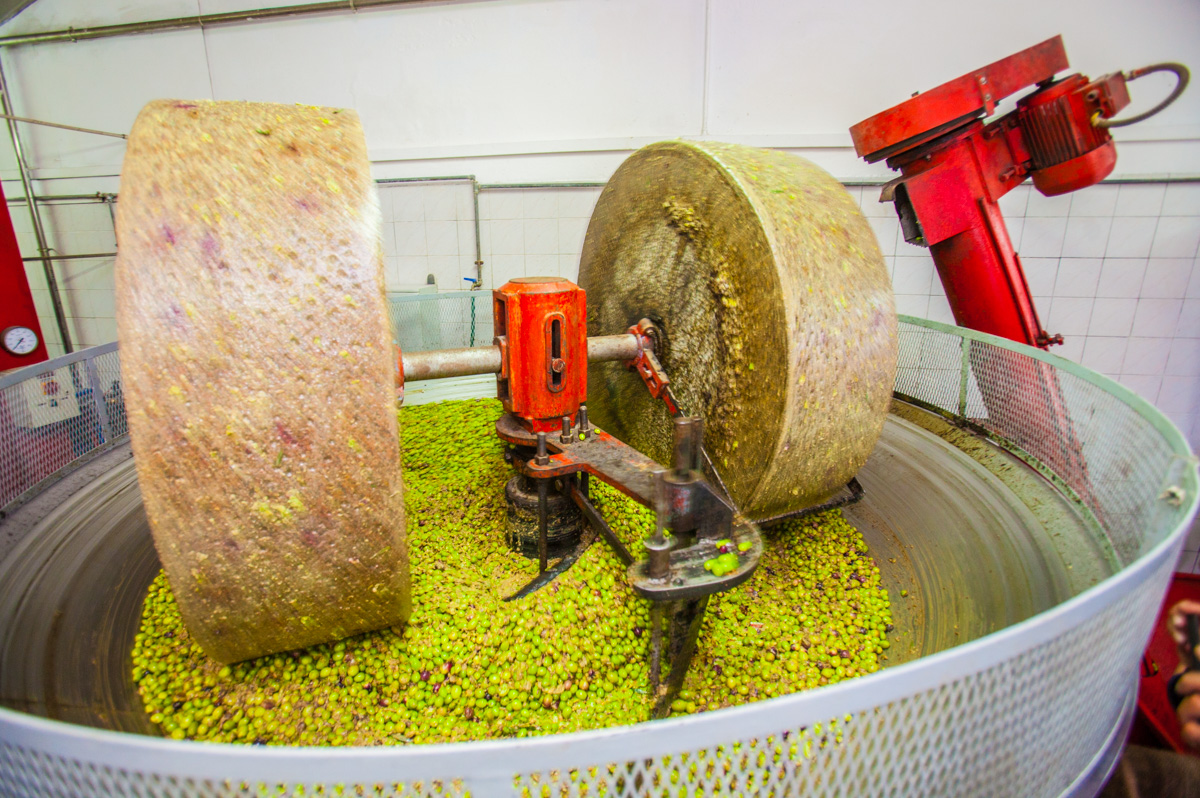
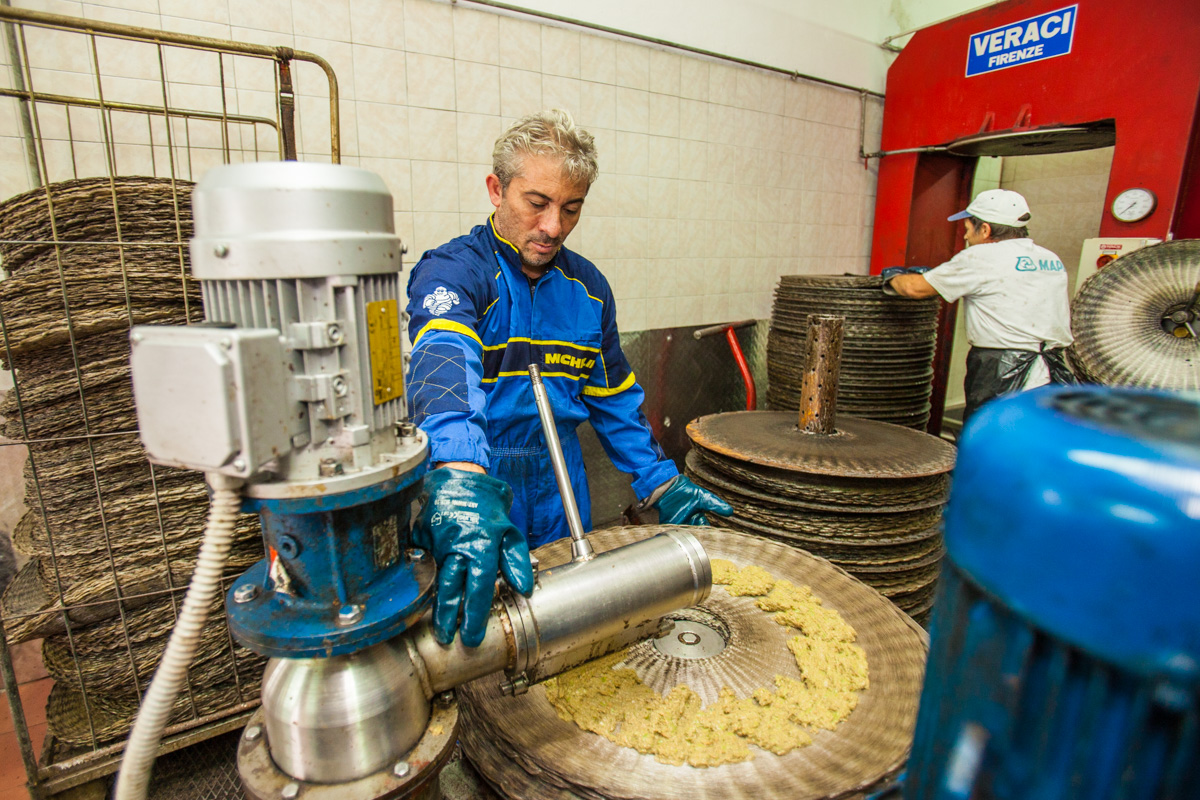

Layer upon layer the discs and olive paste are stacked up until they become a six foot high tower. The tower is then wheeled over to the hydraulic presses which slowly squeeze them together over the course of several hours to extract the olive must – a juicy mixture of water and oil.

The system then feeds the olive must through a series of pipes into a centrifuge which separates out the oil. Finally the oil goes through a filter to remove sediment and then flows like fresh liquid gold into a stainless steel vat ready to be bottled.



We watched this whole process for about five hours, and with each stage the colors and textures of the olives transformed from one beautiful expression to another; the light, bright greens of the whole fruits, sometimes tinged with black – the creamy warmer green of the olive paste – the darker translucent green drippings of the olive must – and finally the glowing golden-green liquid of the fresh pressed oil. Of course the first thing we did when we came home was break off a chunk of bread, dip it into some of the new oil Rocco shared with us, and take a big bite – so good you could just drink it by the spoonful.
They say it’s our sense of smell that is most strongly linked to memories and emotion than any other. When I imagine this day with Rocco, pressing olives, it’s breathing in the peppery, grassy, green, buttery aroma of these incredible little fruits as they were macerated, squeezed, spun and moved around the space for hours. There is something so lovely and relaxing about this earthy smell of fresh olive oil that is now permanently etched into my memory.
